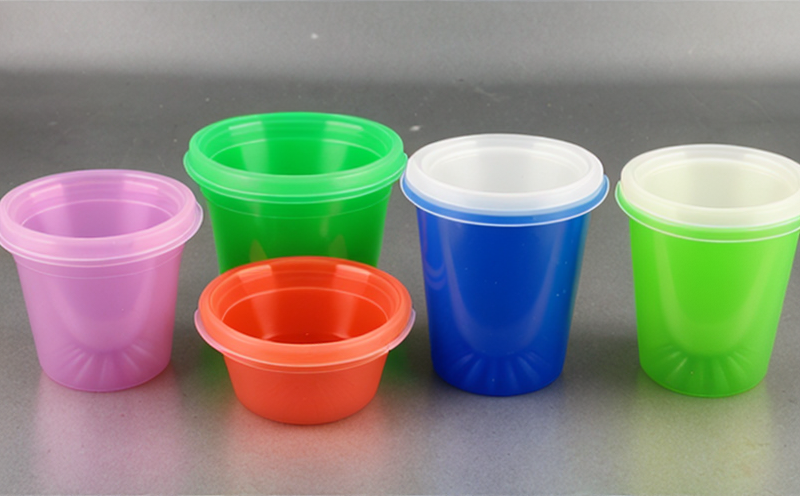ISO 175 Chemical Resistance Testing of Disposable Plastics
The ISO 175 test method is a standardized procedure designed to evaluate the chemical resistance of disposable plastics. This testing ensures that plastic materials used in single-use applications can withstand exposure to various chemicals without degrading, leaking, or adversely affecting product integrity. The primary goal is to ensure safety and compliance with regulatory requirements.
Disposable plastics are widely used across sectors like healthcare, food packaging, and consumer goods due to their convenience and cost-effectiveness. However, the chemical resistance of these materials can be a critical factor in determining their suitability for specific applications. For instance, medical devices must not release harmful substances into bodily fluids or contact surfaces during use.
The ISO 175 test method involves exposing specimens cut from the plastic to a series of chemicals under controlled conditions and then assessing any changes in properties such as mass loss, volume change, or color alteration. The test is conducted at specified temperatures and times depending on the chemical exposure.
Quality managers and R&D engineers rely on this testing to ensure that their products meet stringent regulatory standards. Compliance officers must be aware of these tests to avoid non-compliance risks. This method helps in selecting the right plastic material for specific applications, thus ensuring product safety and reliability.
Scope and Methodology
The ISO 175 chemical resistance test is applicable to a wide range of disposable plastics including polyethylene (PE), polypropylene (PP), polystyrene (PS), and other thermoplastics. The scope includes evaluating the resistance of these materials against common chemicals found in their intended use environments.
The methodology involves cutting the plastic specimens into standard dimensions, immersing them in various chemical solutions for a specified duration at controlled temperature conditions, then measuring any changes that occur in properties like mass gain or loss, color change, and dimensional stability. The test is conducted according to ISO 175:2019 "Plastics—Determination of resistance to selected liquids."
The test parameters include the choice of chemicals (e.g., water, ethanol, formaldehyde), temperature conditions (e.g., room temperature or higher temperatures like 60°C for accelerated aging tests), and exposure times. The results are compared against baseline measurements taken before immersion.
Eurolab Advantages
EuroLab offers comprehensive services in ISO 175 chemical resistance testing of disposable plastics, providing clients with the expertise needed to ensure product safety and compliance. Our state-of-the-art facilities are equipped with precision instruments that guarantee accurate test results.
We employ highly trained professionals who understand the nuances of this testing method and can guide you through every step of the process. Our laboratories adhere strictly to ISO standards, ensuring consistency and reliability in our findings.
Our services extend beyond just executing tests; we offer expert advice on selecting appropriate materials for your applications based on our test results. This ensures that you make informed decisions regarding material selection, enhancing both product safety and performance.
Use Cases and Application Examples
| Application Example | Chemical Exposure | Temperature & Duration | Expected Outcome |
|---|---|---|---|
| Medical device packaging | Ethanol, Sterilizing Solutions | Room Temp. 24 Hours | No Mass Change, No Color Alteration |
| Food packaging | Oxygen, Water Vapor | 60°C for 7 Days | Slight Mass Increase Due to Moisture Absorption |
| Pharmaceutical containers | Sterile Water, Ethanol | Room Temp. 14 Days | No Dimensional Change |
| Beverage bottles | PET Solvent | 60°C for 7 Days | No Color Alteration, No Mass Loss |
| Labware | Acetone, Formaldehyde | Room Temp. 24 Hours | Minimal Dimensional Change |
| Dental Devices | Iodine Solution | 60°C for 7 Days | No Mass Change or Color Alteration |
| Biohazard Waste Bags | Hydrogen Peroxide | Room Temp. 24 Hours | No Mass Loss, No Color Alteration |
The above examples illustrate the diverse range of applications where ISO 175 testing is crucial. Each case highlights different chemical exposures and temperatures to simulate real-world conditions accurately.





